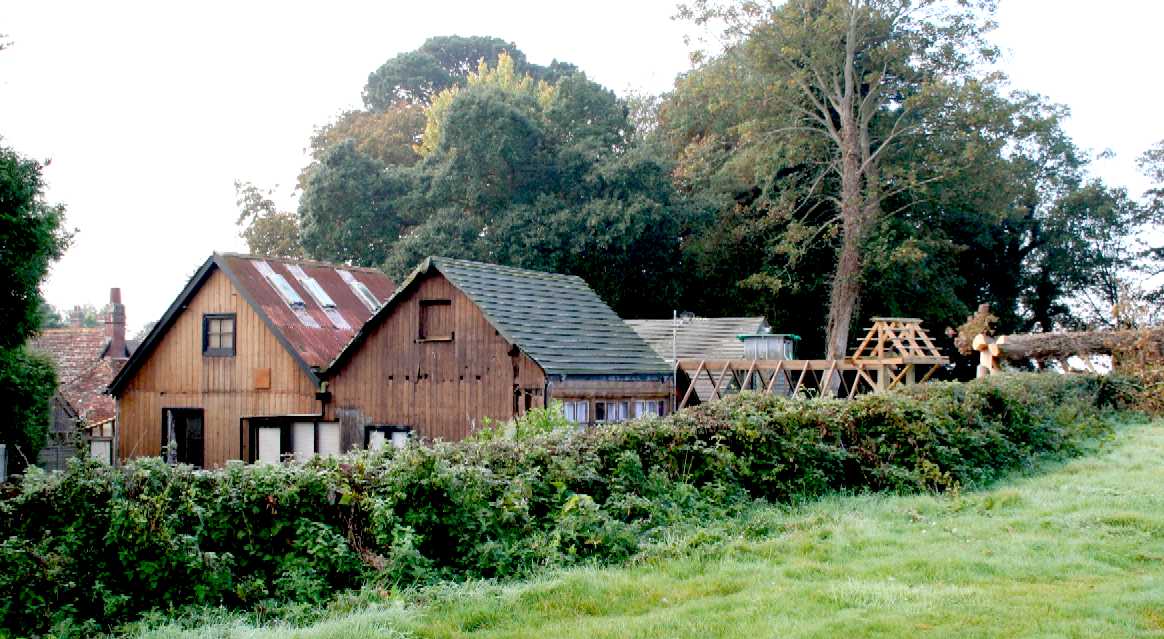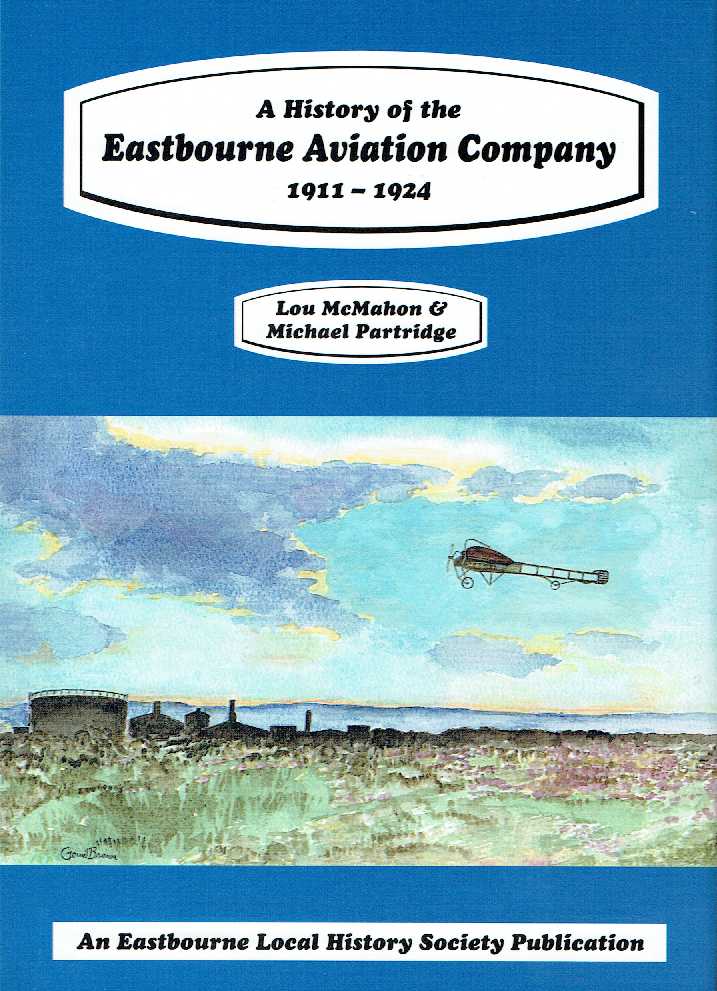|
BARON CARL VON ROEMER & SONS
,,,,
|
|
|
LIME HOUSE - This is a magnificent Edwardian country house set in a private park, but also a nightmare in terms of cost where keeping wood rot at bay and leaking roofs watertight can present maintenance problems and where the rooms are so large and so hard to heat economically without servants to constantly tend the fireplaces. The house is now divided into four smaller units which has lowered the running costs and made them highly sought after. Central heating means that servants are no longer needed to keep the fires alight, making the significant chimney stacks redundant - and simply a convenient attachment point for television aerials.
ELECTRICITY GENERATION - This rare wooden building in Lime Park is a miraculous survivor of years of neglect and failure on the part of both the Parish Council and local authority (Wealden District) to recognise the historic asset on their doorstep. Charles William de Roemer, the son of the Baron Carl Henry Von Roemer and a gifted electrical engineer, built this complex on the other side of the park to house his generating machinery and storage batteries. Part of the building is not shown here while awaiting repairs, but this valuable conservation work began again in earnest in the summer of 2016. Conversion of period buildings makes them highly sought after as wealthier people look for something more interesting to live in. For example, Zoopla scores period buildings highly. Period buildings are generally over 100 years in age and considered of historic importance or may be a historically listed building. In this condition the property would attract developers rather than house hunters, but with a bit of restoration work, such properties are snapped up by culture vultures. Due to the timber construction this building has some elements of a Swiss Cottage style interwoven with the practical generating use. It does though blend into its surroundings rather well.
LIME PARK HERSTMONCEUX
If you are in any way interested in buildings then the chances are that you will have a favorite architectural style of home. For many it’s a deeply emotional attachment and all about what most resonates and makes you think of “home”.
Throughout history, home designs have been influenced by the "architecture du jour." In the not far off future, when computer costs come down and construction companies change their methods, homeowners and builders may be able to design anything for themselves in a CAD program and send it to their local timber factory for processing..
EASTBOURNE AVIATION COMPANY - The Baron, Charles Henry de Roemer lived in Lime Park, Herstmonceux, Sussex, England with Lady de Roemer, the father and mother of Major Charles William de Roemer of Lime Park, Hurstmonceux. The only directors of the EAC by 31-12-1921 were Bernard Fowler (founder), C. W de Roemer and H. Roll (solicitor). This company built 250 Maurice Farman biplanes under license at their Seaplane Base factory and developed a monoplane before ceasing to trade in 1924. The above picture clearly shows the 'Longhorn' sporting the name of the EAC while landing at Eastbourne beach. Four aircraft were built and 19 airmen trained before war broke out in 1914. Thereafter the airfield became a RNAS Training Station at which over 120 men learned to fly.
CHARLES De ROEMER - was an Etonian. He served in the Royal Field Artillery 31st Division, as a Second Lieutenant and Royal Air Force as a Captain, then Major. Apart from his interest in electricity generation and flying he was also a Justice of the Peace and member of the London Area Committee of the National Fitness Council. He died on the 14th of April 1963. He married Audrey Margaret Liddell on the 21st of November 1917. Audrey de Roemer was the daughter of Charles Lyon Liddel (1861) and Margaret Emily Gresham Leveson-Gower (1862). She died on the 15th of August 1967.
Charles
worked with other well known electrical engineers of the day, thought to
include John
Hopkinson, Joseph Swan and Thomas
Edison.
EASTBOURNE AVIATION COMPANY
Before the First World War and RAF Hertmonceux, Charles W de Roemer became interested enough in aviation to join forces with Bernard Fowler to produce aircraft at workshops on the Crumbles at Eastbourne in Sussex. In fact he appears to have been the financier for the Hucks Waterplane Company (No: 122681) that was registered in London on the 19th of June 1912. The authorised share capital was £5,000 pounds issued as £1 shares. Frank Hucks of 2a Adelaide Road, South Hamptstead, London became the Company Secretary with one £1 share and von Roemer of Lime Park, Herstmonceux became a Director with five hundred £1 pound shares.
By way of propping up the waterplane company, Charles subscribed further capital in the form of debentures of £2,500 (on the 25th June) £1,393 (on 20th September) and a further £450 on the 29th of October 1912. Clearly, without his backing this company would not have had the financial muscle to get into production.
Charles was a director of the EAC and being a Major in the RAF it is hardly surprising that he allowed Lime Park to be used by the RAF in World War Two. Where Charles W had ceased generating electricity by 1932, it appears that having the generating rooms underused that he had no difficulty in converting the buildings to a temporary hospice for wounded airmen.
There is a comprehensive publication by Lou McMahon and Michael Partridge on the history of the Eastbourne Aviation Company from 1911 to 1924.
ARCHITECTURAL PERIODS
11,600 BC to 3,500 BC - Architecture in Prehistoric Times
CONTACT US
The Curator Lime Park Heritage Trust Herstmonceux Museum Lime Park Herstmonceux East Sussex BN27 1RF, United Kingdom
Telephone: 0044 1323 831727
LINKS
Maureens Choice A_Sussex_Sunset https://en.wikipedia.org/wiki/Farman_MF.7 http://www.eastbournehistory.org.uk/timeline.php http://www.thepeerage.com/p1827.htm http://www.raf.mod.uk/ http://www.tyrrellsussexbooks.com/books_3.php http://www.maureenschoice.co.uk/book_windows/a_sussex_sunset.html
HERITAGE INDEX A - Z
BARCLAYS BANKING LET DOWN - MISSING ACCOUNT MONEY BARON CARL VON ROEMER & CHARLES de ROEMER CAMPBELL HALL - BLUEBIRD ELECTRIC CARS GAS ENGINES - COAL CONVERSION, INTERNAL COMBUSTION OBSERVATORY - HERSTMONCEUX CASTLE SOLAR LADY - STATUE
|
|
|
This website is Copyright © 2023. All rights reserved. All other trademarks are hereby acknowledged. Contact Us www.cherrymortgages.com
|





